- Best Cultivator Attachments Guide - December 23, 2021
- How to Find the Best Leaf Blower Attachment - December 23, 2021
- Best 21 Inch Lawn Mower Blade Options - December 18, 2021
Centipede is an incredibly popular warm-season grass due to its resistance in different weather conditions. It is also extremely low maintenance in comparison to other warm-season grasses.
If you’ve decided to use Centipede grass sod instead of seeds or plugs, then I recommend you continue to read on our centipede grass sod guide as I will be going over the following:
- The benefits of sod
- How to plant Centipede grass sod
- How to look after your grass sod
- How To Remove sod using a sod cutter
- Alternatives to sod and Centipede grass
- The products I recommend
Benefits of Sod In Comparison to Seeds
- Sod will give the look of a well-grown lawn as soon as you lay it.
- Sod can spread at nearly any point during the growing season. You should avoid spreading sod in extreme heat conditions.
- There isn’t as much work involved as there would be using grass seeds or plugs.
- You won’t notice many if any, weeds using sod.
- Sod can withstand foot traffic as soon as the roots have set, which usually takes two or three weeks.
How To Plant Centipede Grass Sod
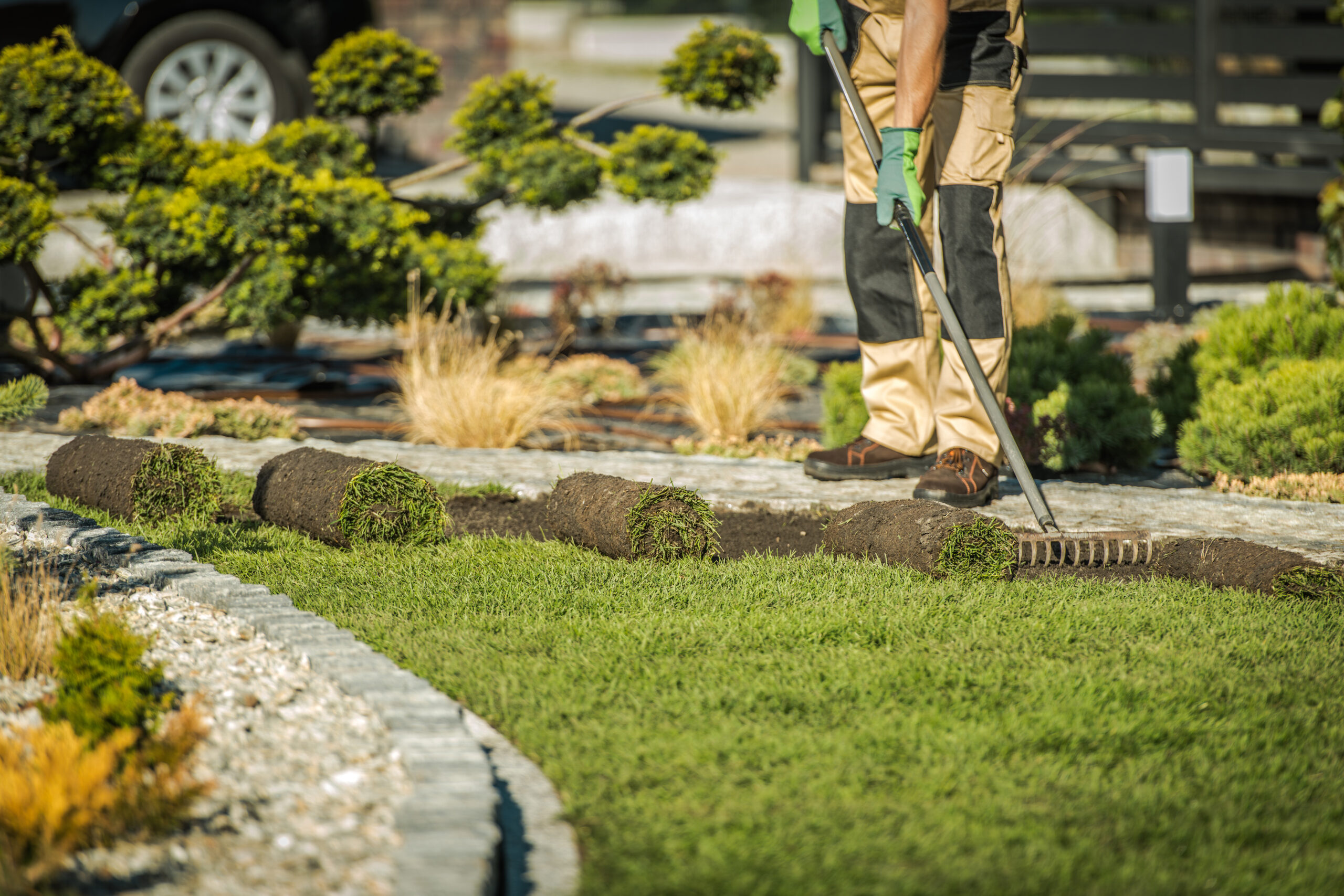
Fixing Your Soil
It’s important that your soil is the highest quality possible when you’re using sod. So if you’re unsure of the soil quality, I recommend feeding the soil organic matter such as:
- Clean Straw
- Pine Needles
- Grass Clippings
- Wood Shavings
- Leaf Litter
- Compost
Feeding your soil any of the items above will give it nutrients that will make it healthier and more suitable for laying your sod. Using organic matter will also lead to better soil drainage. Roots might not be established if there is too much water in the soil.
Cleaning Your Lawn
You should remove any grass rocks, weeds, sticks, leaves, and other obstructions as this can and will negatively affect the growth of your soil. Getting rid of obstacles will also help with drainage in your soil.
Help Your Roots Establish

If your soil isn’t sandy, then I recommend tilling your soil around 2 inches deep. This will allow faster access for roots, allowing them to establish faster. I also recommend using a fertilizer that contains phosphorus. This will also help the development of roots.
Aeration
Aerating your lawn is the process of poking holes into the soil so that water and air can easily reach the roots of your grass. This will help towards making your grass sod strong and healthier. You can get tools that specialize in making this an easy process.
Laying The Sod
While you’re spreading the sod, be sure to place any strips in shaded areas to keep it from drying out quickly.
Once you’ve laid a strip of sod, be sure to stable it down with biodegradable staples, this will keep it stuck in one place. Strips of sod should run edge to edge in your lawn. After three weeks at most, you’ll have a robust and stable lawn that looks great.
Caring For Sod
There isn’t as much work included in caring for Sod in comparison to alternatives. However, there are still a few tasks that need to be carried out, especially in the first few weeks.
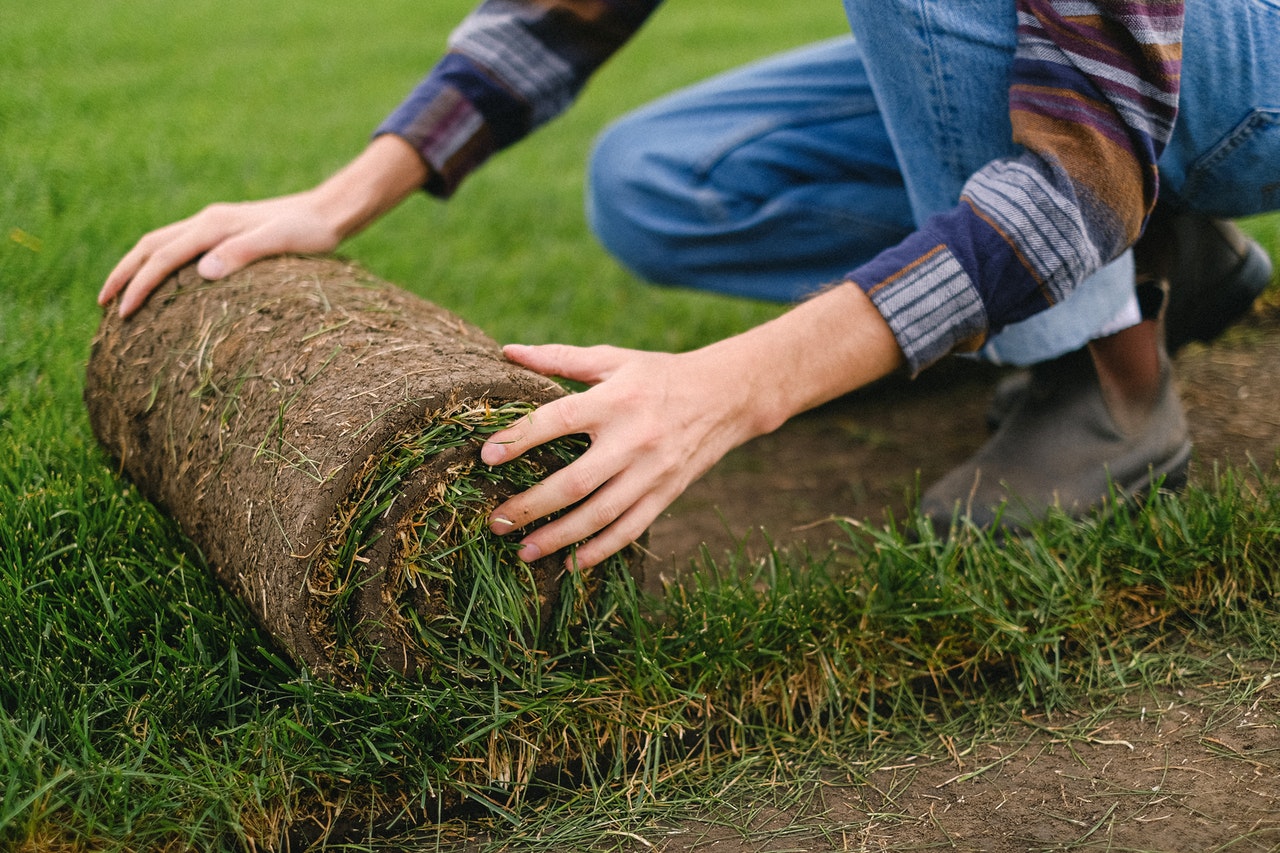
Watering
For the first two or three weeks, you need to keep watering your sod at least twice every day. The best time to do this would be in the morning. It’s a real challenge to give your sod too much, but I don’t recommend more than six times a day.
After the first few weeks, you should switch to watering after mowing your lawn or regularly during times of drought.
If you’ve been experiencing heavy rainfall, there isn’t a need to water for a few days. However, if your grass begins to brown, I recommend giving it some water and fertilizer.
Foot Traffic and Mowing
I recommend keeping the foot traffic to a minimum on your grass for the first few weeks. You don’t want to put too much stress on the grass, as this could lead to it browning faster than it should.
After three weeks, your grass should withstand foot traffic, and you should mow your grass at least once a week. But don’t mow more than a quarter of the blades. This can lead to stress.
Feeding
It would be best if you fed your grass fertilizer a month after it’s been laid on the soil. This will help the roots and lead to longer-lasting grass.
Preventing Pests and Diseases
The best way to prevent pests and diseases is just to keep your grass healthy. Centipede grass will naturally protect itself from these two threats.
Dethatching
Thatch is a material that will gather underneath the leaf blades of your grass. Removing this will allow more air to access the soil, and watering will be much more effective. It will also help towards preventing disease and pests in your grass.
How To Remove Grass Sod Using a Sod Cutter
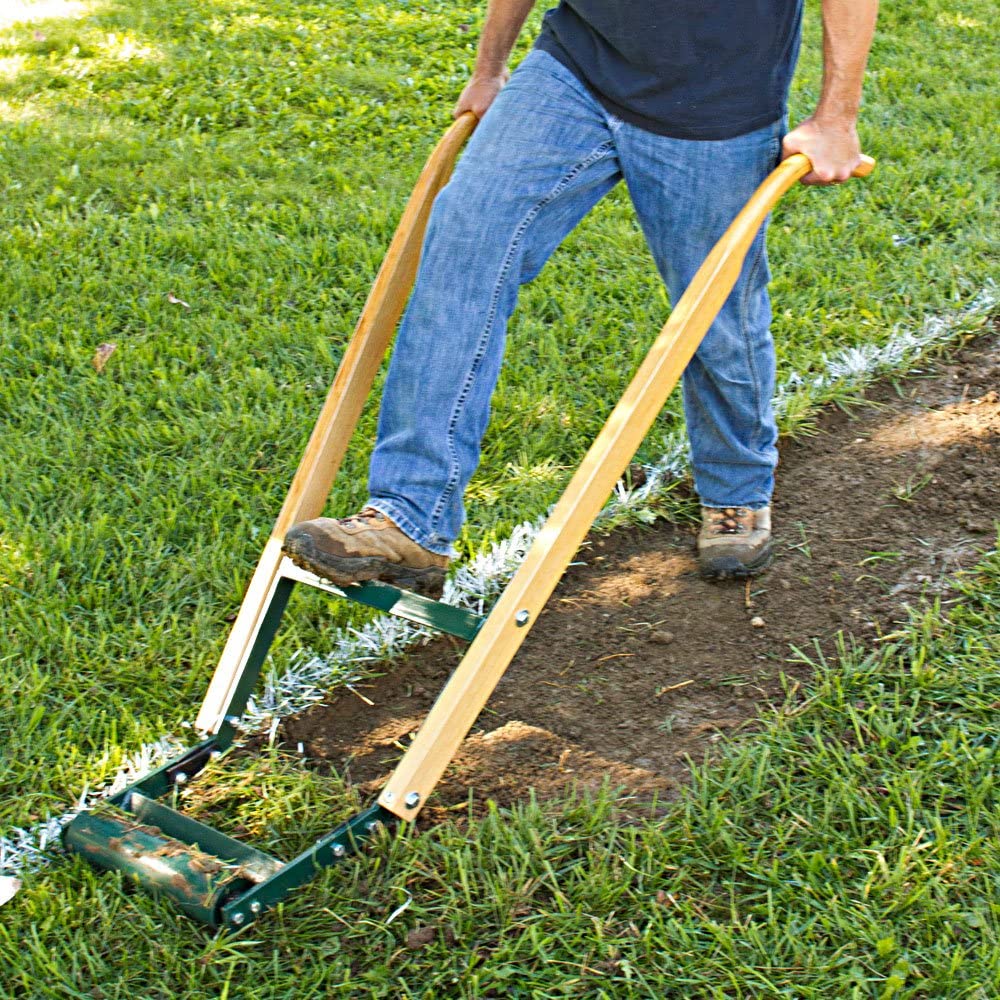
If you’re looking to replace your sod, you’ll need it to carefully remove the current sod you have. Removing it without the proper tools and procedures could lead to you damaging your soil.
Using A Sod Cutter
A sod cutter is a tool that is often used by professionals as it’s one of the easier ways of removing your sod.
You’ll want to water your sod a few days in advance to dampen it. This makes it much easier to cut through and remove.
You can adjust how deep the machine cuts. A depth of one inch will be enough to remove the sod. This should be enough to remove depth. You control the depth of the cutter with a lever on the machine. There should be a user manual included with the product if you’re confused about the different controls.
Make sure you wear protective gear such as goggles and gloves, so you don’t run the risk of hurting yourself in the process. Often these cutters are quite loud, so you could use headphones to avoid damaging your hearing.
You should cut your sod into sections, which will make lifting it and disposing of it much easier. Use a shovel to lift the sod and place it into a wheelbarrow.
There are alternative ways to remove your sod, and we even have an excellent article all about removing sod and preparing your lawn for new grass.
Alternatives To Sod
If you’re considering one of the alternatives to sod, then I recommend you read the descriptions below just to get an idea of the benefits.
Grass Seeds
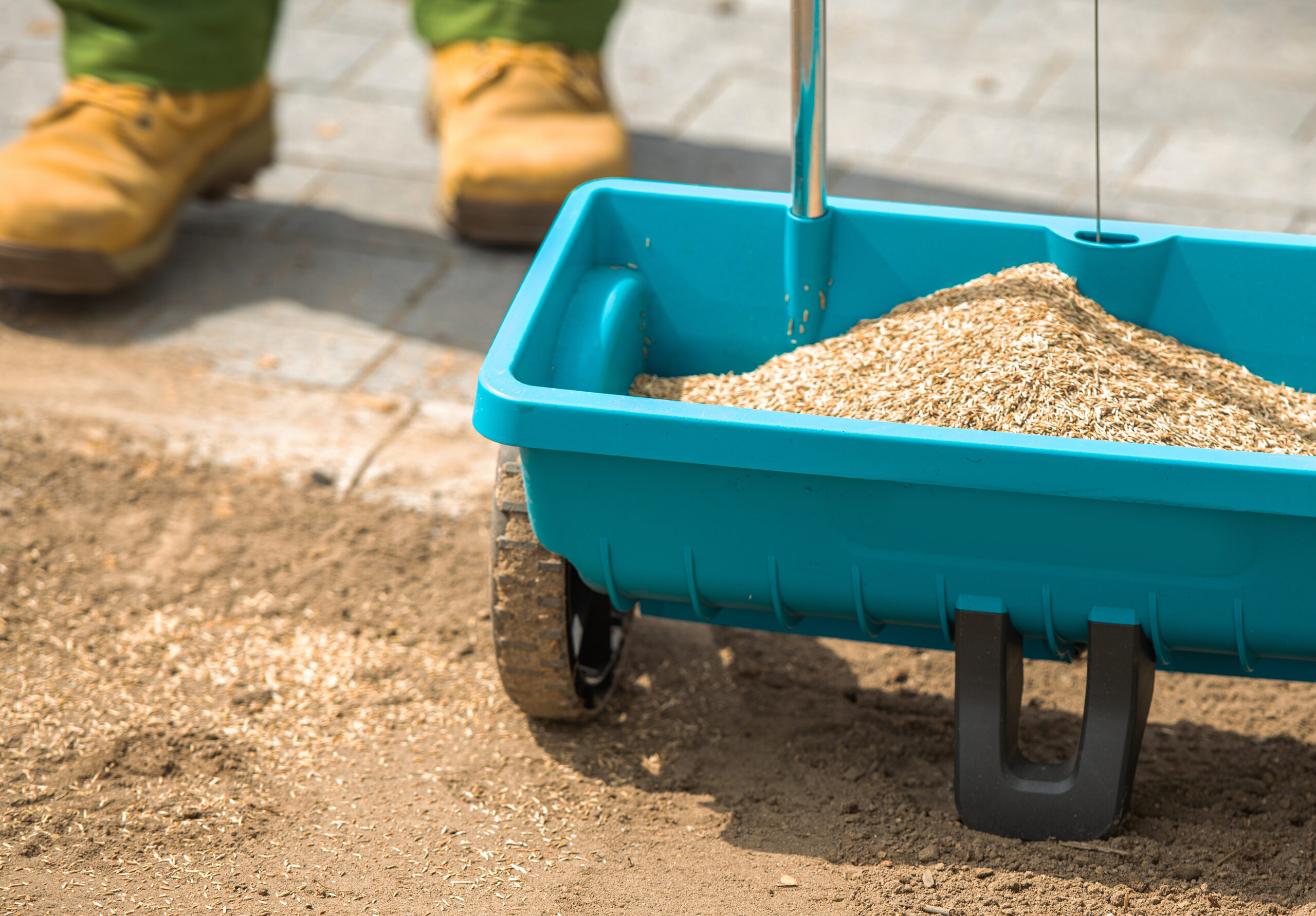
Grass seeds are great for people who want a bit more control over their lawn. It does come with the disadvantage of more work.
Pros:
- You have more influence over the germination period and root establishment. Giving you more responsibility, but if you put enough work in, you’ll get greater results.
- The cost of grass seeds is significantly lower.
- It can usually withstand more foot traffic.
Cons:
- Grass seeds require a lot more maintenance if you want excellent results.
- The growth period is a lot longer for Centipede Grass Seeds, and it can take up to 28 days. Generally, sod has a much lower growth period.
- Grass seeds are a lot more vulnerable to weeds and diseases.
Grass Plugs
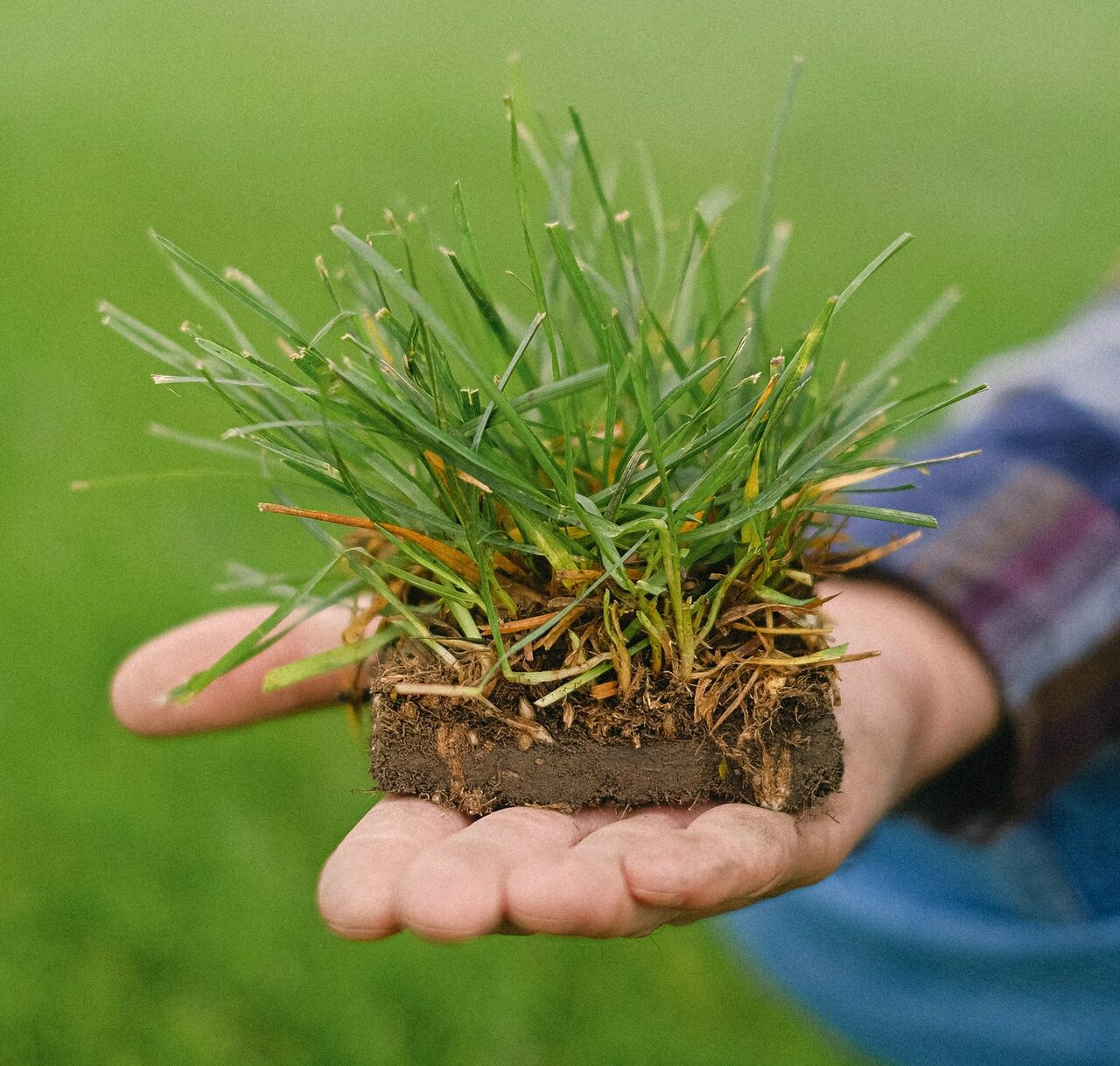
Grass plugs are more suited when you need to fill in smaller areas of your lawn, as each plug usually covers a couple of feet.
Pros:
- Plugs can quickly be installed.
- Plugs aren’t as expensive as the other two options.
Cons:
- They are more useful for small patches of your lawn where there isn’t any grass.
- Despite the fact they can quickly be installed, it does take a while for them to establish. The plugs can take up to a year to fully develop the grass.
Hydroseeding
The biggest selling point of hydroseeding is the price difference, but it does come with a few downsides.
Pros:
- Cheaper than sod
- It’s quick to install
- Tolerant to diseases because it uses a lot of different grass types
Cons:
- Weeds are more likely to root
- It needs a lot of water in comparison to sod
- The germination period is far longer than other options
Alternatives to Centipede Grass
Zoysia Grass
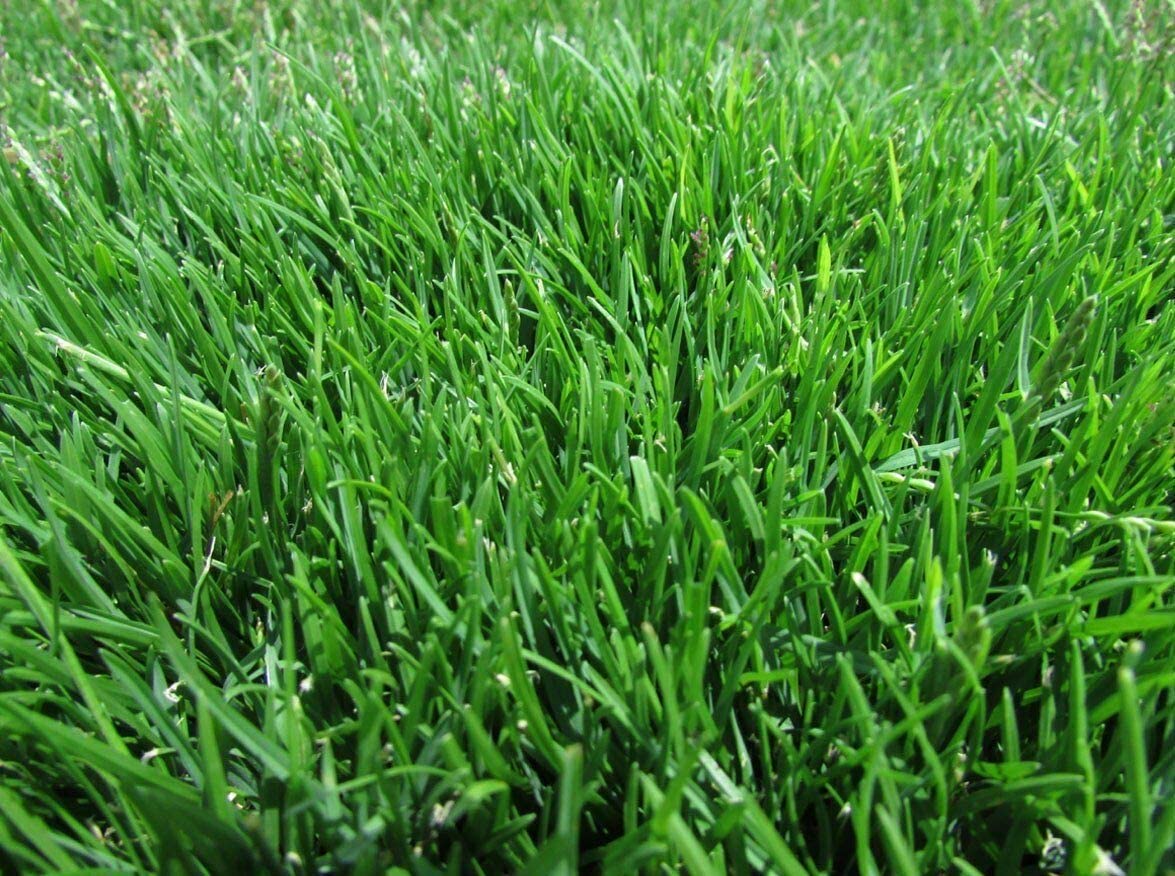
In drought and heavy foot traffic conditions, this amazingly tough will stay strong. It can also resist colder weather conditions. If you’re looking for more information, I recommend this article on the differences between Zoysia and Bermudagrass.
Pros:
- Can withstand higher heat conditions such as droughts
- Weeds struggle to root in Zoysia
- Shaded areas won’t negatively affect growth
- Decent resistance against diseases
Cons:
- Can’t take heavy foot traffic
- Thatch is likely to build-up
- Soil needs excellent drainage
Bahiagrass
Bahiagrass is still low maintenance after the first few weeks, and while it is durable, it isn’t the best out of our options. Heavy foot traffic will likely harm it more. It can, however, resist drought conditions extremely well.
Pros:
- Known for its excellent heat and drought resistance
- It doesn’t require many nutrients
- It doesn’t need much water
Cons:
- You’ll be required to mow your lawn frequently with bahiagrass
- It can’t tolerate cold weather
- Can’t withstand heavy foot-traffic
Bermudagrass
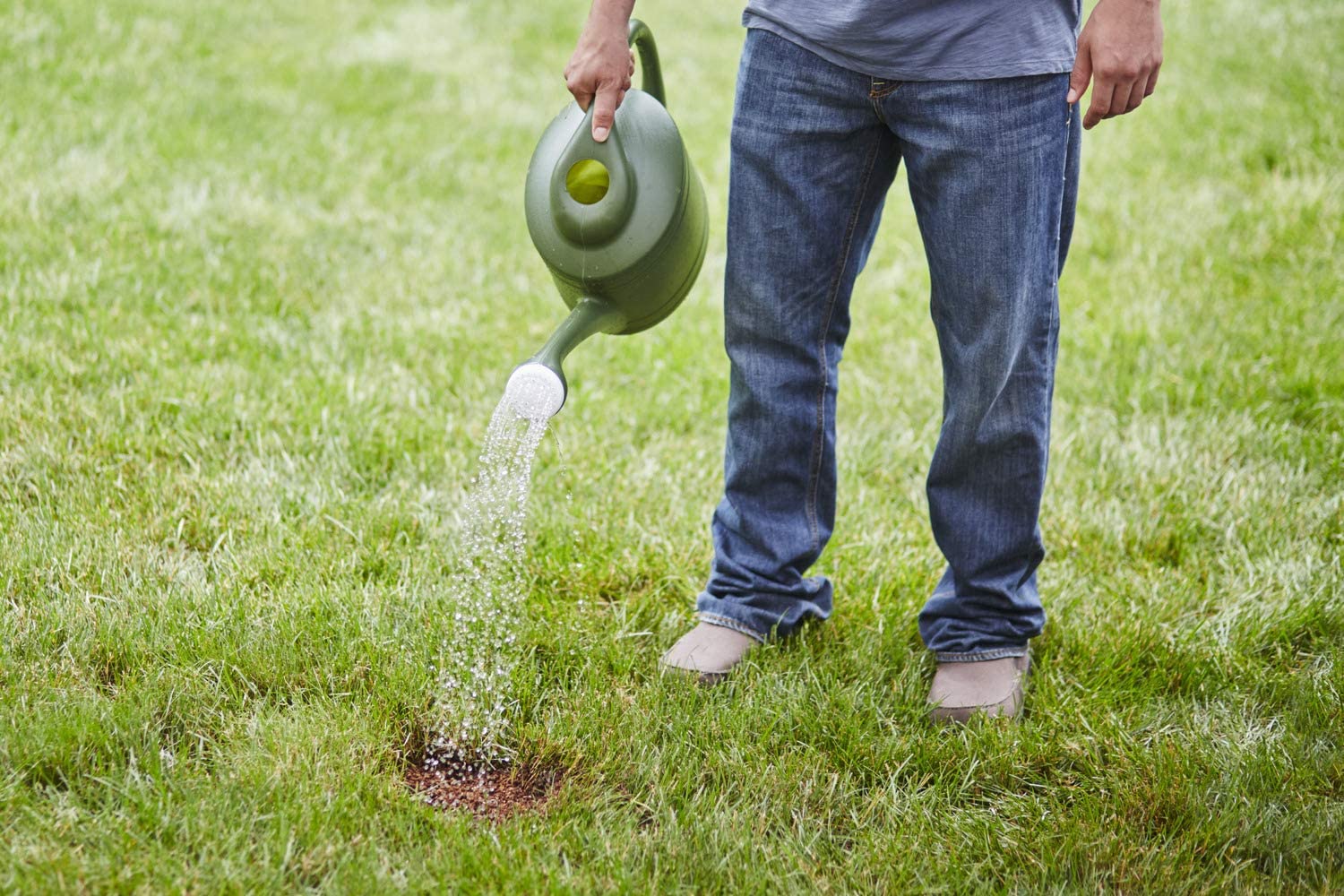
Bermudagrass is another popular grass type because of its durability and how versatile it is.
Bermudagrass can survive in all different soil types and can easily resist damage from drought, heavy foot traffic, cold conditions. And if it is damaged, it will quickly restore itself to the best condition possible.
Pros:
- Can tolerate heavy foot traffic
- Known to quickly repair itself after sustaining damage
- Doesn’t catch diseases
- Long life-cycle
- Resistant against high temperatures
Cons:
- Is susceptible to weeds rooting
- Bermuda grass will need a lot of sunlight
- High Maintenance
Recommended Products
Centipede Grass Sod
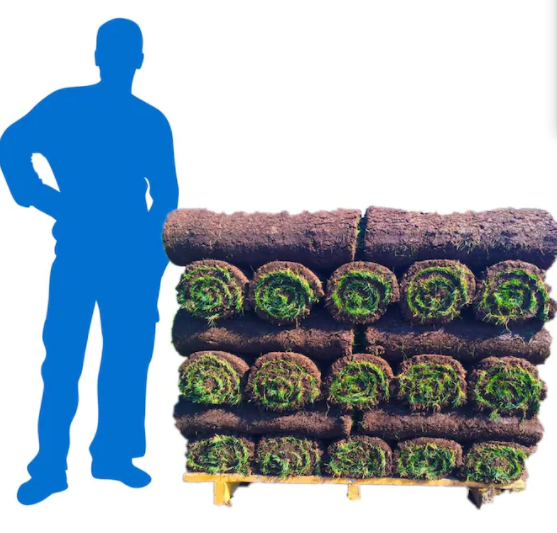
Lowes will deliver this Centipede grass sod straight to your house for free after order completion. It’s recommended that this grass receives 6 to 8 hours of direct sunlight.
Centipede Grass Plugs
In this package, you get a whopping 32 centipede grass plugs. It has great disease resistance and won’t require much maintenance.
Centipede Grass Seeds
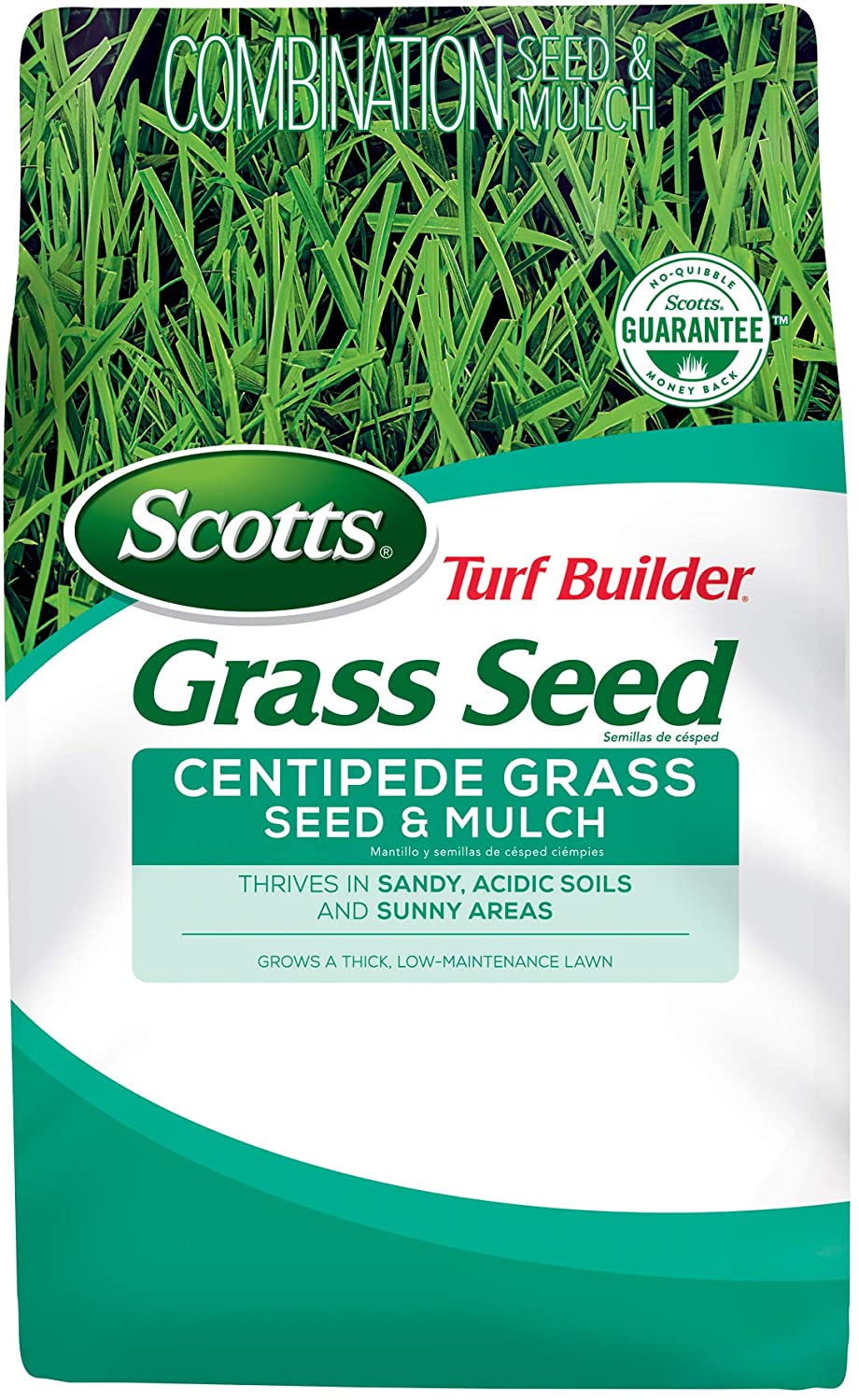
Scotts Centipede grass is one of the best you can find on Amazon. It won’t require much maintenance, and it even comes with mulch that will improve the quality of your grass and support healthy growth.
Frequently Asked Questions
Answer: Sod is great for the environment, and if you’re looking to go eco-friendly, I highly recommend it over plugs and seeds. Sod helps our environment by:
• Sod will absorb harmful pollutants such as carbon dioxide
• It reflects the heat of the sun
• It will release oxygen into the air
Answer: In comparison to grass seeds, it’s a bit more expensive, but really you’re getting a much better product. One that will likely last you longer and is, as previously mentioned, best for the environment.
Centipede grass sod is great at resisting diseases, and it’s unlikely you’ll get pests infesting the grass. It still has the same resistance as seeds. And while the process of laying sod can often take a while, there’s much less maintenance needed to grow a healthy lawn.
So, in short, yes, sod is worth your money and time. It’ll still have the same aesthetic quality as grass seeds.
Answer: Hydroseeding has a lot of positives that might make you think it’s better than sodding. But It really is up to your preference.
Hydroseeding is a cost-effective and efficient way of installing grass seeds. It’s also perfectly healthy.
However, you will be dealing with a lot more work after, as it’s likely grass that’s grown through hydroseeding will allow weeds to root. You’ll also need to water a lot more this way, and it really is dependent on having rainy weather when installing the grass.
The germination period in comparison to sodding is a lot longer, meaning you won’t have healthy and beautiful grass for a while after installation. Hydroseeding is best for the larger yards.
Answer: It’s best not to use Centipede grass if you have regular heavy foot traffic, including pets. I’d avoid this and pick a grass type such as Bermudagrass.
Answer: Healthy Centipede grass will resist weeds. The best way to keep it healthy is by watering it and giving it fertilizer. Weeds are intrusive and will ruin the look of the lawn, so it’s best to keep them out.
Conclusion
Grass sod is a great way of getting instant results on your lawn. You won’t need to wait for a germination period to get the beautiful look. It’s definitely worth all the effort, especially as you won’t need to put much work into it after laying it.
If you found this article useful and want more, I highly recommend this informative article on the differences between pine straw and mulch.

